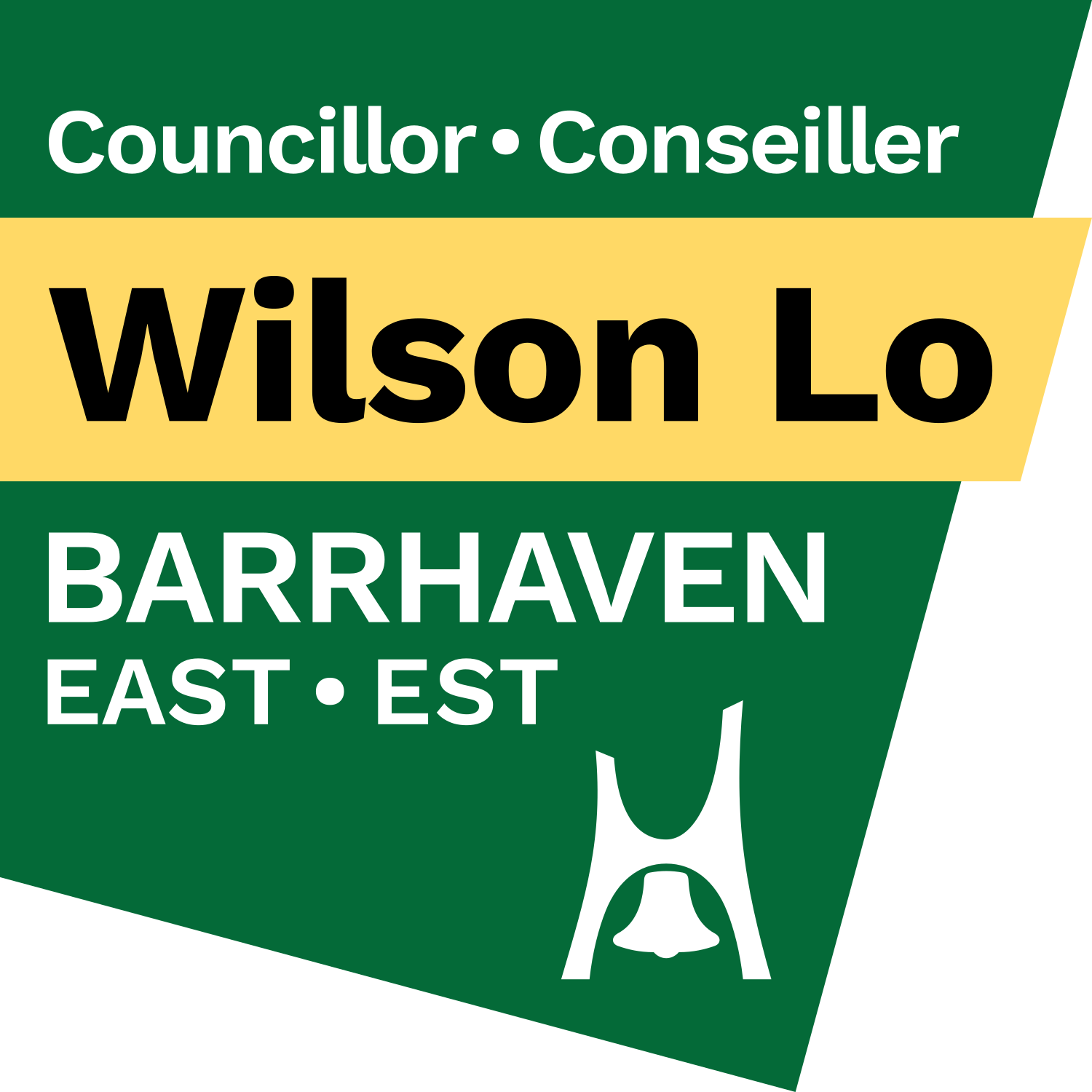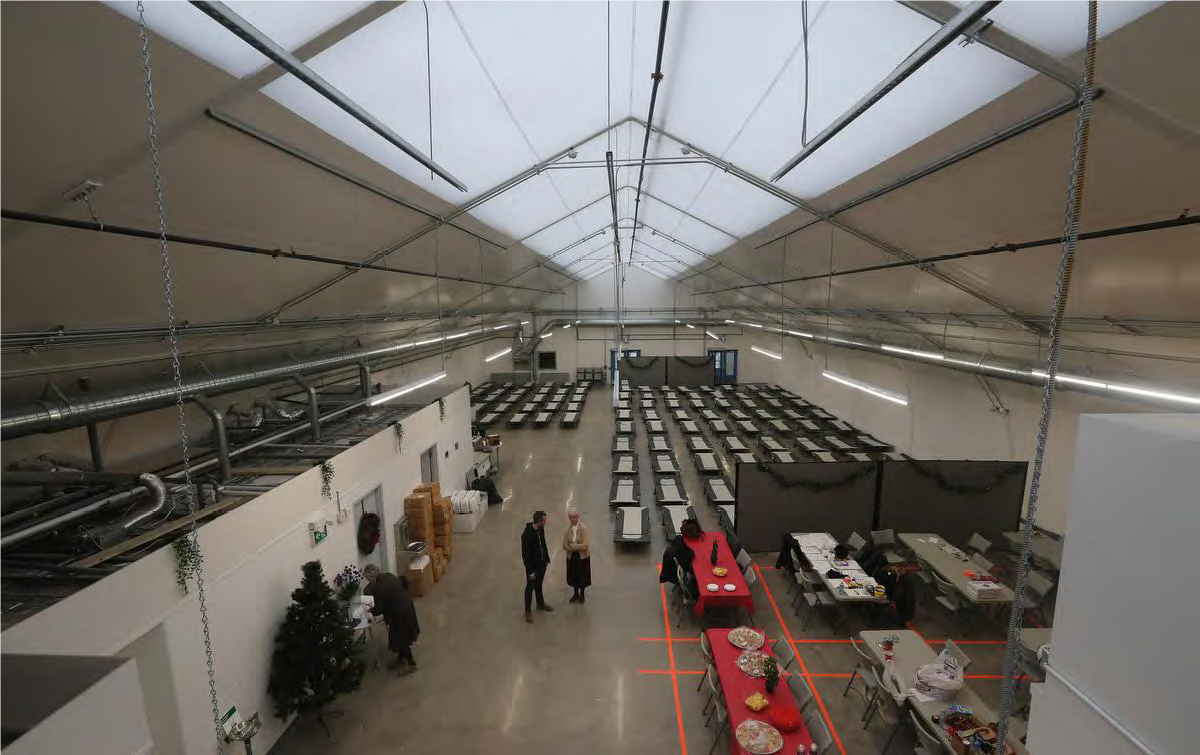Weekly newsletter: July 9, 2024
Hi everyone!
Housing and homelessness is the topic of discussion this week.
Tomorrow (Wednesday) at City Council, the Integrated Transition to Housing Strategy update will be presented by staff. More about the strategy itself further in the newsletter.
Among its initiatives include the use of temporary sprung structures to house newcomers, mostly refugees and asylum seekers.
I will be moving a motion to cancel the implementation of any sprung structure project.
In the ITHS report, City staff mention three city-owned land parcels have been shortlisted for potential newcomer reception centres, using sprung structures. The structures may also be evolved to address shelter system overflow as required over time.
Sprung structures are tent-like in appearance and consist of metal arches connected by an outer shell of fabric or fibreglass. The structures are fully serviced with water and sewer and have internal services like communal toilets, showers, and a kitchen, with space to provide appropriate on-site social services.
The structures have a typical lifespan of 25 to 50 years and can house 100 to 200 individuals.
However, it does not meet Council’s goal of supplying dignified housing options for Ottawa’s unhoused residents and newcomers, nor is it a good use of land, considering the sprung structures are to be located on city-owned land parcels, ripe with potential for vertical density.
Imagine escaping a conflict zone or persecution, only to be put into a communal space in a tent-like structure. What dignity is there in that? Additionally, we already have an existing programme with support from other levels of government to house newcomers in hotels and motels.
Staff claim not proceeding with sprung structures will jeopardise up to $185 million of provincial and federal funding, which is wholly untrue.
Provincial funding is conditional on federal funding, which is provided through the Interim Housing Assistance Programme (IHAP), which mentions the provisioning of temporary accommodations for newcomers. Temporary accommodations are not limited to sprung structures as staff claim and include options currently in use like hotels and motels.
The City is experiencing concurrent housing and homelessness crises. All sorts of fingers have been and will be pointed to pass blame and buck between levels of government, organisations, and even among residents. But the bottom line is using sprung structures makes no progress towards permanent housing— it just shuffles people into another shelter system with a different name and look.
Community partners including the Alliance to End Homelessness expressed concerns about sprung structures, urging Council to prioritise housing investments rather than short-term shelter responses.
The attitude of using “crisis” to do everything now and deal with the consequences later needs to change. There are better options.
Affordable multi-floor rapid construction structures are a dignified option for newcomers and other unhoused individuals. YW Kitchener-Waterloo (successor to the local YWCA chapter) procured and opened a four-storey women’s shelter using modular mass timber construction in less than a year. The same construction method can be used for permanent housing options outside the shelter/transitional realm as well.
Administratively, sprung structures solve nothing and just moves the problem into another silo.
Strategically, this proposed use of city-owned land stunts any potential the parcel has for permanent housing solutions (including subsidised and affordable housing), private development, or other uses by the community.
Most importantly, there is no human dignity in the sprung structure setting.
It’s easy to blame the federal government as they are the level of government responsible for immigration, but solutions at the municipal level can’t come at the expense of the humans who now call Canada home.
Sure, it’s better than an actual tent in a warzone, but does that mean we subject them to conditions that would be uncomfortable relative to what most people live in here?
Integrated Transition to Housing Strategy (ITHS)
First approved by Council last year, the ITHS outlines a variety of initiatives to support people in the shelter system to transition to housing. Among the priorities was an exit from using city-owned recreation facilities as emergency overflow shelters.
Emergency overflow shelters began operations in May 2020 as a height-of-pandemic measure to reduce the density and allow for adequate physical distancing for residents in the shelter system. Initially, the Bernard-Grandmaître Arena in Vanier and Dempsey Community Centre in Alta Vista were used.
From there, they unfortunately evolved to simply being overflow shelter capacity. The Heron Road Community Centre in Herongate was added as the third facility used for such purposes by late-2023.
Dempsey has since returned to regular community centre use, but Bernard-Grandmaître and Heron Road continue to be used 24/7 as overflow shelters, unavailable to their local communities for their intended use.
As of mid-May 2024, there is an estimated 260 people living unsheltered in Ottawa.
Documents for reference: ITHS as approved last year, this year’s update.
Progress so far
In October 2023, the Mayor and Councillor Dudas convened an Emergency Shelter Crisis Task Force to expedite short-term solutions to address shelter capacity. As part of that work, Council in November 2023 passed four motions:
Actively advance sprung structures or other semi-permanent facility options
Work with newcomer-serving agencies to identify supports and alternative placement options and continue to request support from other levels of government
Safely increase capacity at existing overflow shelters, including using bunk beds
Pursue overnight warming spaces and services and plan for a capacity increase for the upcoming 2024/2025 winter
Progress over the last year includes 360 emergency overflow shelter users housed, 365 temporary spaces added for the previous winter, 177 new supportive housing units in development, and 423 new shelter and transitional housing beds added or in development. Additionally, 358 cases (a “case” can be one person, a couple, or a family) in encampments were also housed.
The continued increase in demand is primarily driven by the arrival of newcomers, made up mostly of refugees and asylum seekers, who now make up the majority (64 per cent) of people served. Accordingly, on-site supports were also enhanced at these facilities, including settlement services and housing needs assessments.
Additionally, in partnership with the federal government, the City also opened an emergency overnight centre in the Graham Spry Building by Westboro Station.
Through an agreement with the provincial government, the City of Ottawa will also receive new funding for shelter services over the next three years.
The ITHS’ short-term initiatives, which included the winter response strategy, were successfully delivered, which shifts the focus now to the medium-term initiatives.
Medium-term initiatives span the next four or so years and include the continued development of supportive housing and capacity addition to the shelter system through new facilities, the latter of which I’m not supportive of.
Notable examples include the conversion of the former office building at 230 Queen Street into transitional housing for up to 130 single adults, mostly newcomers, and the purchase of 1245 Kilborn Place to be developed into a supportive housing hub.
We’ve made good and valuable progress to put people into housing. Why take a step back and add to the shelter system?
Until next time,
-Wilson




